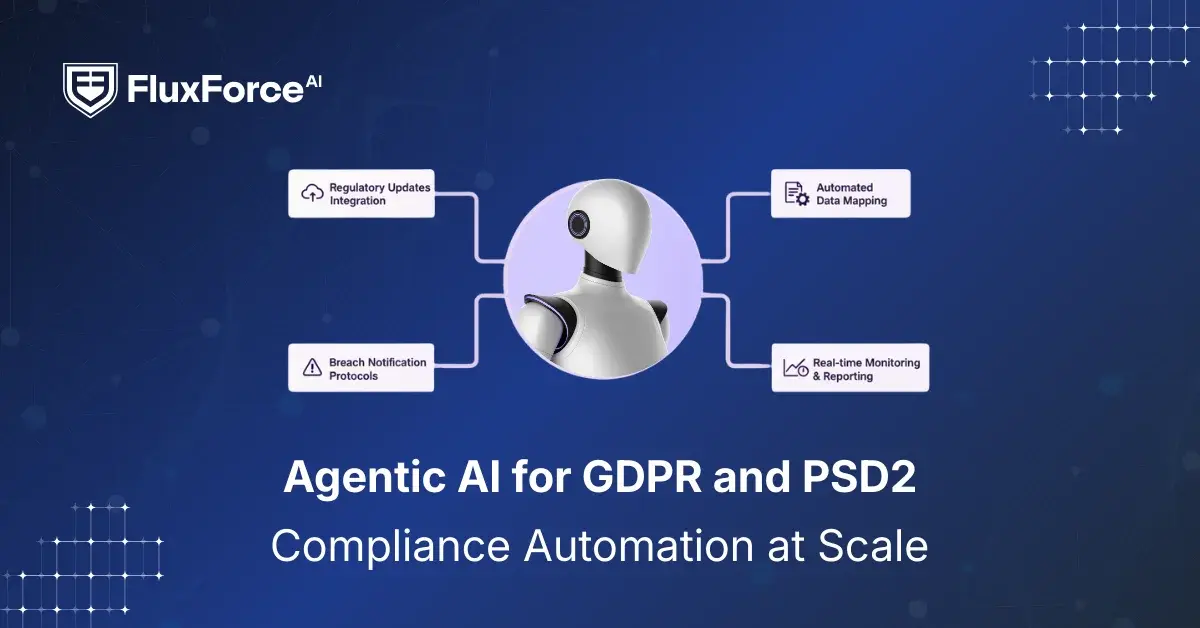Listen to our podcast 🎧

Introduction
Open banking is currently the face of modern banking. APIs connect banks, partners, and customers in real time to deliver financial services with speed and convenience. However, these connections also create more entry points for attackers to target financial systems.
Hackers often rely on guesswork. With repeated tries and no restrictions, they can bypass security and exploit APIs.
CISOs and financial leaders cannot rely only on authentication and encryption. They need strict controls on how often APIs are accessed. The process of API rate limiting is beneficial for institutions as it stops excessive requests before they damage systems or compromise data.
This blog explains how API rate limiting works, why it is critical for banking API security, and the strategies financial institutions can use to prevent abuse and keep their systems secure.
How Important Banking API Security is for Financial Institutions
APIs are the direct path to core banking systems and databases. They handle requests to transfer funds, retrieve account details, and verify customer identities.
A financial services API can be misused if security controls are weak or API restrictions are not in place. Fraudsters can exploit these weaknesses to steal sensitive data or disrupt essential banking operations. This can lead to losses such as:
- Stolen customer details and transaction histories
- Money taken through unauthorized access
- Banking services going offline or slowing down
- Fines for breaking security and privacy rules
- Customers losing trust and moving to other banks
What is API Rate Limiting in Banking?
API rate limiting is a key security measure that controls how many requests a user or system can send to an API within a set timeline. It works by setting limits on access, which helps prevent overloading the system and reduces the chance of abuse.
In banking, this means controlling how often someone can check account details, transfer funds, or access transaction histories. Without these limits, attackers could send unlimited requests to guess passwords, steal sensitive data, or disrupt services.
-1.png?width=1200&height=628&name=hubspot%20blog%20(6)-1.png)
Shaping the Future of AI in Finance
Fluxforce research uncovers how banks and enterprises are adapting to fraud, compliance, and data challenges in 2025.
How API Rate Limiting Protects Against Common Banking API Threats
An API rate limiter enables banks to put restrictions on requests that demand internal data access. If the number of requests exceeds the limit, the system responds with hints, such as “too many requests” or “retry-after sometime” status code. Here’s how it helps protect banking APIs:

Limiting Login Attempts
Rate limiting blocks repeated failed logins after a set number of tries. This slows attackers attempting to guess passwords or use stolen credentials, reducing account takeover risks.
Slowing Data Requests to Prevent Scraping
By capping the speed of data requests, rate limiting disrupts bots that try to extract account details or transaction histories in bulk. This makes large-scale data theft harder to execute.
Controlling Traffic to Avoid Service Overload
Attackers can overload banking APIs by sending huge volumes of requests. Rate limiting controls incoming traffic and drops excessive requests before they disrupt services. This keeps systems responsive for genuine customers.
Blocking Rapid Transactions
Fraudsters often use bots to perform multiple unauthorized transfers quickly. Rate limiting detects abnormal transaction patterns and stops further attempts, reducing financial losses and keeping accounts safe.
Key API Rate Limiting Strategies for Banking Security

Rate limiting in APIs is essential for both security and performance in banking applications. Institutions must adopt proven strategies that prevent abuse, protect sensitive data, and maintain reliable service availability.
Set Limits Based on User Roles
Assign different request thresholds for customers, employees, and third-party partners. This prevents high-privilege accounts from being exploited while allowing regular users to interact without unnecessary service interruptions.
Use Dynamic Rate Limits
Adjust limits in real time based on traffic patterns and detected risks. This helps contain sudden spikes from potential attacks without affecting normal transactions or customer activity.
Apply IP-Based Throttling
Block or slow repeated requests from suspicious IP addresses. This strategy deters brute-force and scraping attempts while maintaining access for trusted and verified network sources.
Combine Rate Limiting with Monitoring
Integrate rate limit controls with active API monitoring tools. This allows instant detection of abnormal activity and enables quick adjustments to thresholds for ongoing threat prevention.
Common Rate Limiting Mistakes That Weaken Banking API Security
Rate limiting protects banking APIs from abuse, but configuration errors can make it ineffective. Poorly designed limits or missing controls can leave financial systems exposed to fraud and service disruptions.
- Setting Limits Too High: Overly generous request limits allow attackers to launch brute-force or data scraping attempts before being blocked, increasing the risk of large-scale breaches.
- Setting Limits Too Low: Strict limits can block legitimate transactions during peak activity, frustrating customers and interrupting essential banking operations.
- Using the Same Limit for All Users: Applying one static limit ignores differences between customers, partners, and internal systems, creating either weak spots or unnecessary restrictions.
- Lack of Monitoring and Alerts: Without tracking API traffic, banks cannot identify suspicious request patterns or adjust rate limits to stop evolving threats.
- Ignoring IP and Geo-Based Filtering: Failing to apply limits based on IP address or location allows attackers to continue sending harmful requests from known malicious sources.
- Not Integrating with Other Security Measures: Relying on rate limiting alone without authentication, encryption, and anomaly detection leaves APIs open to advanced, multi-step attacks.
API Security Best Practices for Financial Institutions

APIs connect with banks sensitive systems. Without strict security, they become easy targets for fraudsters aiming to steal data, disrupt services, or commit unauthorized transactions at scale. Below are some of the ways how CISOs can secure APIs in financial services.
1. Use Multi-Factor Authentication for All Access: Every API request should require multi-factor authentication. This extra layer makes it harder for attackers to exploit stolen credentials and helps protect customer accounts from takeover attempts.2. Control Request Volumes with Rate Limiting: Set limits on how many requests can be made in a given time. This reduces the risk of brute-force logins, automated fraud, and denial-of-service attacks.
3. Encrypt Data Throughout the Process: Apply strong encryption to all data moving through APIs and store it securely when at rest. Encryption shields sensitive information from interception or tampering.
4. Monitor and Log API Activity: Keep detailed records of API requests and responses. Monitoring in real time allows rapid detection of unusual activity and quick action to prevent damage.
5. Test and Patch Regularly: Run frequent security tests, including penetration and vulnerability scans. Fixing identified weaknesses early ensures attackers can’t exploit them later.
6. Use API Gateways for Centralized Control: Gateways help manage access, enforce policies, and block malicious traffic before it reaches critical banking systems.
Conclusion
For banking leaders and CISOs, securing APIs is essential to safeguarding customer trust, financial integrity, and ensuring uninterrupted service. Every transaction request, account verification, and balance inquiry is both an opportunity for service excellence and a potential vulnerability if left unchecked.
The strategies outlined here are not isolated technical steps but part of a cohesive security framework that strengthens core banking systems against evolving threats.
By treating API security as a strategic responsibility rather than a purely technical task, leaders can ensure innovation, convenience, and growth never come at the expense of customer safety or institutional reputation.






Share this article